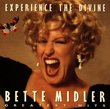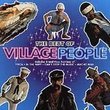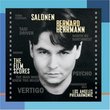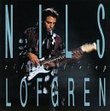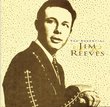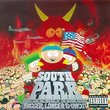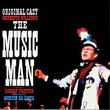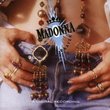| All Artists: Luciano Berio, Boris Berman, Tony Arnold Title: Luciano Berio: Sequenzas I-XIV for Solo Instruments Members Wishing: 1 Total Copies: 0 Label: Naxos Original Release Date: 1/1/2006 Re-Release Date: 5/16/2006 Genres: Pop, Classical Styles: Vocal Pop, Chamber Music, Forms & Genres, Short Forms, Historical Periods, Classical (c.1770-1830), Instruments, Brass, Keyboard, Reeds & Winds, Strings Number of Discs: 3 SwapaCD Credits: 3 UPC: 747313266128 |
Search - Luciano Berio, Boris Berman, Tony Arnold :: Luciano Berio: Sequenzas I-XIV for Solo Instruments
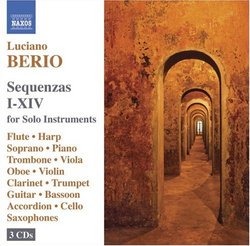 | Luciano Berio, Boris Berman, Tony Arnold Luciano Berio: Sequenzas I-XIV for Solo Instruments Genres: Pop, Classical
|
Larger Image |
CD DetailsSimilarly Requested CDs
|
CD ReviewsSpectacular Playing of Extraordinarily Virtuosic Solo Works J Scott Morrison | Middlebury VT, USA | 05/23/2006 (5 out of 5 stars) "I thought I'd never say anything like this, but this music, from my relatively conservative perspective, is extremely thorny, even ugly, but I couldn't stop listening to it, it was so fascinating. And that's a lot of listening when you're talking about three CDs, sixteen tracks, over three hours of music. My only prior exposure to any of Berio's 'Sequenza' series was at a musical house party years ago when the principal trombone of the St. Louis Symphony, Bernie Schneider, played Sequenza V. I was entranced (and impressed with his playing) but never sought out any recordings nor heard any of them in recital. I have to say that I have been more or less obsessed with this recording since I got it. Mostly I am fascinated by the ungodly virtuosity and extended techniques required by the solo instrumentalists but there is also something hypnotic about the music itself as well. I usually am interested to figure out form in new music, but in this case I'm completely stumped. I have not seen scores and perhaps that would help, but I suspect that the serial procedures and new instrumental techniques required by Berio's music would simply leave me confused. Still, I listened on, puzzled, fascinated, repulsed, awed and completely engaged.
From David Osmond-Smith's article on Berio in the online Grove Dictionary: "The 'sequence' of the title is, broadly, that of harmonic fields: fixed pitch resources that are each explored for their melodic and harmonic potential in turn. The ways in which this conception is realized vary widely from one Sequenza to the next. They serve a virtuosity that, as Berio often emphasised, is not merely that of flying finger or agile tongue. The composer also required a virtuosity of 'sensibility and intelligence' that often entails a thoroughgoing understanding of the history of the instrument: most explicitly in Sequenza VIII for violin (1976-7), but also, for instance, in the characterization of registers in Sequenza XII for bassoon (1995). Indeed, the piece may become an essay in the instrument's social history, as in Sequenza XIII for accordion (1995-6), which creates an amalgam of echoes from tango, work-song, cabaret and other forms of popular entertainment. In certain cases, where history has consigned to an instrument an excessively constricted range of characteristics, Berio may write à rebours. Both Sequenza II for harp (1963) and Sequenza VI for viola (1967) invest their instruments with an unwonted ferocity." Berio wrote fourteen Sequenzas, but two of them have alternate versions (VIIa for oboe and VIIb for soprano saxophone; IXa for clarinet [given a really luscious performance here by Joaquin Valdepenas] and IXb for alto saxophone); hence sixteen tracks. (They are not played in the order in which they were written.) Most of the musicians are Canadian and all the recordings were made in the same venue, St. John Chysostom Church, Newmarket, Ontario, over a period from November 1999 to May 2004. The sonics are excellent with enough room ambience to give a 'real' sound to the recordings. Some highlights: The incredible vocal (dare I call it singing?) rendition by Tony Arnold of Sequenza III; the fiercely hypnotic viola of Steven Dann in VI; the unearthly, often microtonal, bassoon (how does he make it sound like an air raid siren?) of Ken Munday in XII. But then there is not a weak performance here. I wish I could comment more about the music itself but my music-analytical arsenal simply doesn't allow me to do much more than describe it in the most general, and mostly non-technical, terms. This is the only recorded set of Sequenzas that includes Berio's last one, Sequenza XIV for cello, written in 2002 not long before he died. And of course the set's budget price makes it all the more attractive. Query: Why (pun intended) can't I hear the trombonist's spoken 'Why?' (or 'Warum?', a tribute to the German clown Grock who often ended his routines by saying that single word) at the end of Sequenza V? Is it spoken through the instrument itself? Maybe my ears need a thorough cleaning. Heartily recommended for the adventurous and for the student of any of the instruments featured here. Scott Morrison" |

 Track Listings (7) - Disc #1
Track Listings (7) - Disc #1